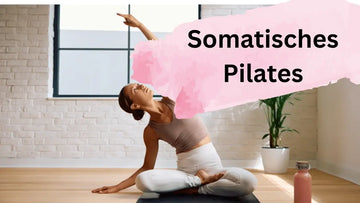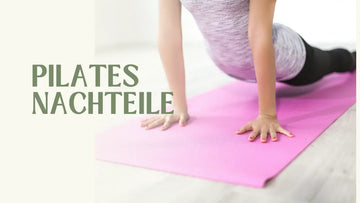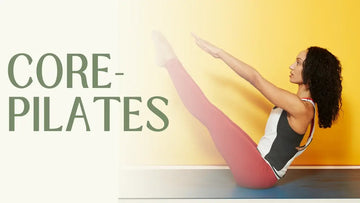Over the past few decades, Pilates has developed from a niche method into a proven training concept that brings body and mind into harmony. We will examine the origins, principles and diverse applications of this training method and show how effectively Pilates can contribute to increasing physical fitness, rehabilitation and promoting mental balance.
Origin and Development of Pilates
Pilates was developed at the beginning of the 20th century by Joseph Pilates, who combined his experience in physical training, rehabilitation and breathing techniques. Originally conceived as a method to restore physical strength and flexibility, Pilates has since established itself as a holistic form of training that focuses on the connection between body, mind and breathing.
In the early years, the method was mainly used in rehabilitation centers and during the Second World War to help injured soldiers. Over time, Pilates also gained importance in the civilian sector, as the technique not only promotes muscular strength, but also posture, coordination and improved body awareness. Continuous development and adaptation to modern training needs has ensured that Pilates is now used in numerous fitness studios, rehabilitation centers and even in corporate health promotion.
Basic principles and methodology of Pilates
Pilates is based on six central principles that are integrated into every exercise:
-
Concentration: Each movement requires full attention. Focusing on the muscle groups enables precise execution, which leads to better results.
-
Breathing: The correct breathing technique not only supports the flow of movement, but also ensures a deep oxygen supply to the muscles and promotes relaxation.
-
Control: Each exercise is performed in a controlled and conscious manner, which prevents injuries and increases the effectiveness of the training.
-
Precision: Accuracy in execution ensures optimal muscle activation and coordination.
-
Flow: The movements are fluid and continuous, which evenly challenges and strengthens the muscles.
-
Centering: The focus is on strengthening the core muscles, which serve as the foundation for all movements.
These principles form the foundation of the Pilates method and ensure that the training is carried out both effectively and safely. Through the conscious use of these elements, not only are the muscles strengthened, but posture and general well-being improved.
Scientific Evidence and Health Benefits
Numerous studies prove the effectiveness of Pilates in various areas of application. Research shows that regular Pilates training:
-
Improves core stability: Strong core muscles are essential for a healthy spine and stable posture.
-
Increases flexibility: Targeted stretching exercises make the muscles supple and more flexible, which also reduces the risk of injury.
-
Promotes body coordination: The interaction of movements and breathing trains the nervous system and improves motor skills.
-
Reduces stress: The combination of breathing exercises and conscious movement has a relaxing effect and can help reduce stress.
-
Rehabilitative effects supported: Pilates has proven to be an effective means of promoting muscle rebuilding and restoring mobility, particularly in rehabilitation after injuries or operations.
Due to these comprehensive effects, Pilates is suitable both as a preventative measure to maintain physical health and as a complementary form of therapy in rehabilitation.
Pilates compared to other forms of training
Compared to traditional strength and endurance training methods , Pilates offers a holistic approach that not only aims at building muscle, but also at flexibility, balance and mental relaxation. While strength training, for example, primarily focuses on building muscle mass, Pilates places great emphasis on the quality of movement and control over one's own body.
Even compared to yoga, which also brings body and mind into harmony, Pilates shows some differences:
-
Focus on the core: Pilates places particular emphasis on strengthening the deep abdominal and back muscles.
-
Dynamic movement sequences: While yoga often emphasizes static positions, Pilates combines flowing movement sequences with targeted muscle stimulation.
-
Specific rehabilitation aspects: Pilates is often used as a complementary form of therapy in rehabilitation because it specifically activates muscle groups that are weakened by injuries or poor posture.
Due to these specific characteristics, Pilates offers an excellent complement to other forms of training and can be individually adapted to the needs of the trainee.
Effectiveness of Pilates: Practical Applications
The effectiveness of Pilates is demonstrated in numerous practical examples and areas of application:
1. Rehabilitation and pain therapy
Pilates is often used in rehabilitation to support patients after injuries or operations. The controlled movements promote muscle building without overloading and help to correct poor posture. Chronic back pain in particular can be significantly alleviated through targeted core stabilization.
2. Improving performance in sports
Competitive athletes also benefit from Pilates, as it not only strengthens the muscles, but also improves movement coordination and body awareness. Stable core muscles are essential for achieving optimal performance in sports such as running, swimming or cycling. In addition, Pilates can help prevent injuries by balancing muscular imbalances.
3. Health promotion in everyday life
For people who lead a sedentary lifestyle or suffer from stress, Pilates offers a welcome opportunity to actively do something for their health. Regular training not only improves posture, but also general well-being and mental balance. The combination of movement and breathing exercises has a positive effect on the autonomic nervous system, which leads to improved resistance to stress.
4. Prevention and age-appropriate fitness
Pilates is a training method that can be adapted to all age groups. Especially for older people who want to maintain their mobility and balance, Pilates offers gentle exercises that minimize the risk of falls. The adaptability of the exercises makes it possible to tailor the training to the individual and meet the needs of different age groups.

Modern training approaches and integration into everyday life
In today's world, where health and fitness are playing an increasingly important role, Pilates has found a firm place in modern training concepts. Our experience shows that Pilates can be easily integrated into various lifestyles - whether as a complementary measure in the gym, as part of a holistic health program or as a daily exercise for managing stress.
integration into everyday working life
Many companies now offer Pilates as part of their corporate health promotion program. Short, targeted exercises can be integrated into everyday work to relieve tension, increase concentration and improve the general well-being of employees. This leads to higher productivity and a reduction in sickness absences.
Digital training platforms and online courses
Digitalization has also led to new opportunities in the area of Pilates. Online courses and digital training platforms make it possible to perform Pilates exercises flexibly and regardless of location. Those training benefit from individually adaptable training plans that are tailored to their personal needs and goals. The combination of videos, interactive instructions and personal feedback makes the training effective and sustainable.
connection between body and mind
Another key benefit of Pilates is the conscious connection between body and mind. Through targeted breathing exercises and concentration phases, not only the physical body but also mental strength is trained. This holistic approach leads to improved self-awareness and can contribute to a balanced lifestyle in the long term.
practical examples and experience reports
Our many years of experience in the field of Pilates show that the method is much more than just a fitness trend. Numerous users report significant improvements in their quality of life:
-
Pain reduction and mobility: Patients with chronic back pain experience significant relief of their symptoms and increased mobility through regular Pilates training.
-
Athletic performance: Athletes from different sports confirm that Pilates improves their body stability and helps them prevent injuries.
-
Mental balance: Many users report that the combination of physical exercise and mental focus has enabled them to develop increased stress resistance and better self-awareness.
These positive effects underline that Pilates can be used as an effective training method both preventively and rehabilitatively.

Scientific studies and evidence-based results
The effectiveness of Pilates is not only anecdotally proven, but has also been scientifically investigated. Numerous studies confirm that:
-
Activation of the deep muscles: Regular Pilates training leads to improved stabilization of the spine and reduces the risk of back injuries.
-
Improved movement coordination: Training strengthens neural connections, leading to better coordination and fine-tuning of movements.
-
Long-term health benefits: Pilates promotes not only physical but also mental health, which is reflected in an overall improved quality of life.
These findings are based on methodologically sound studies that confirm the positive influence of Pilates on general health and well-being.
adaptation and individualization of training
A key advantage of Pilates is the ability to adapt the training to the individual. Every person has different requirements, needs and goals, which can be optimally taken into account through personalized training programs. Our experts develop tailor-made Pilates concepts that respond to the personal requirements of each individual.
Personalized training plans
Through a detailed analysis of the body structure and individual fitness goals, we can create specific training plans that take the following aspects into account:
-
Muscle imbalances and poor posture: targeted exercises to correct imbalances.
-
Rehabilitation needs: Gentle exercises that support the rebuilding of muscle strength and mobility.
-
Performance optimization: Intensified training programs for athletes to improve core muscles and movement coordination.
The individual adjustment ensures that every trainee can get the most out of Pilates training and benefits from sustainable effects in the long term.
integration into the modern lifestyle
The demands of modern everyday life require training methods that are flexible, effective and time-efficient. Pilates meets all of these criteria and can be easily integrated into hectic everyday life. Whether as a morning routine, as a short relaxation session during the lunch break or as a supplement to an intensive sports program - Pilates offers a wide range of options for improving the quality of life.
Pilates in the Office and Home Office
Pilates is becoming increasingly important, especially in times of increased home working and sedentary activities. With simple exercises that can be performed without major equipment, tension can be relieved and blood circulation can be improved. This practice has established itself as an effective way to counteract the negative effects of a sedentary lifestyle.
Digitally supported training
Modern technologies make it possible to flexibly integrate Pilates exercises into everyday life via digital platforms and mobile apps. Interactive videos and live courses offer high training quality, even when personal contact is missing. Regular online feedback sessions allow training plans to be continuously adjusted so that each user is supported individually.
Conclusion: The effectiveness of Pilates
Pilates is much more than just a fitness trend. It is a holistic training method that offers long-term health benefits through targeted muscle activation, improved body awareness and mental focus. Our experience and scientific evidence confirm that Pilates is particularly impressive in the following aspects:
-
Holistic health promotion: The method has a preventive, rehabilitative and performance-enhancing effect.
-
Individual adaptability: Training programs can be tailored precisely to the needs and goals of the trainees.
-
Integration into modern everyday life: Whether in the office, at home or in professional sports – Pilates can be flexibly integrated into any lifestyle.
-
Scientifically based effects: Studies prove the positive effects on core stability, mobility, coordination and stress reduction.
The combination of physical and mental exercises not only strengthens the body, but also significantly improves general well-being. With Pilates we achieve a balance that meets the challenges of modern life with a sustainable and effective training method.
Pilates therefore offers an ideal solution for anyone looking for a comprehensive training approach that not only harmonizes the body but also the mind. Our many years of expertise and the continuous development of the method guarantee that Pilates will continue to play a central role in the field of health and fitness promotion in the future.



















